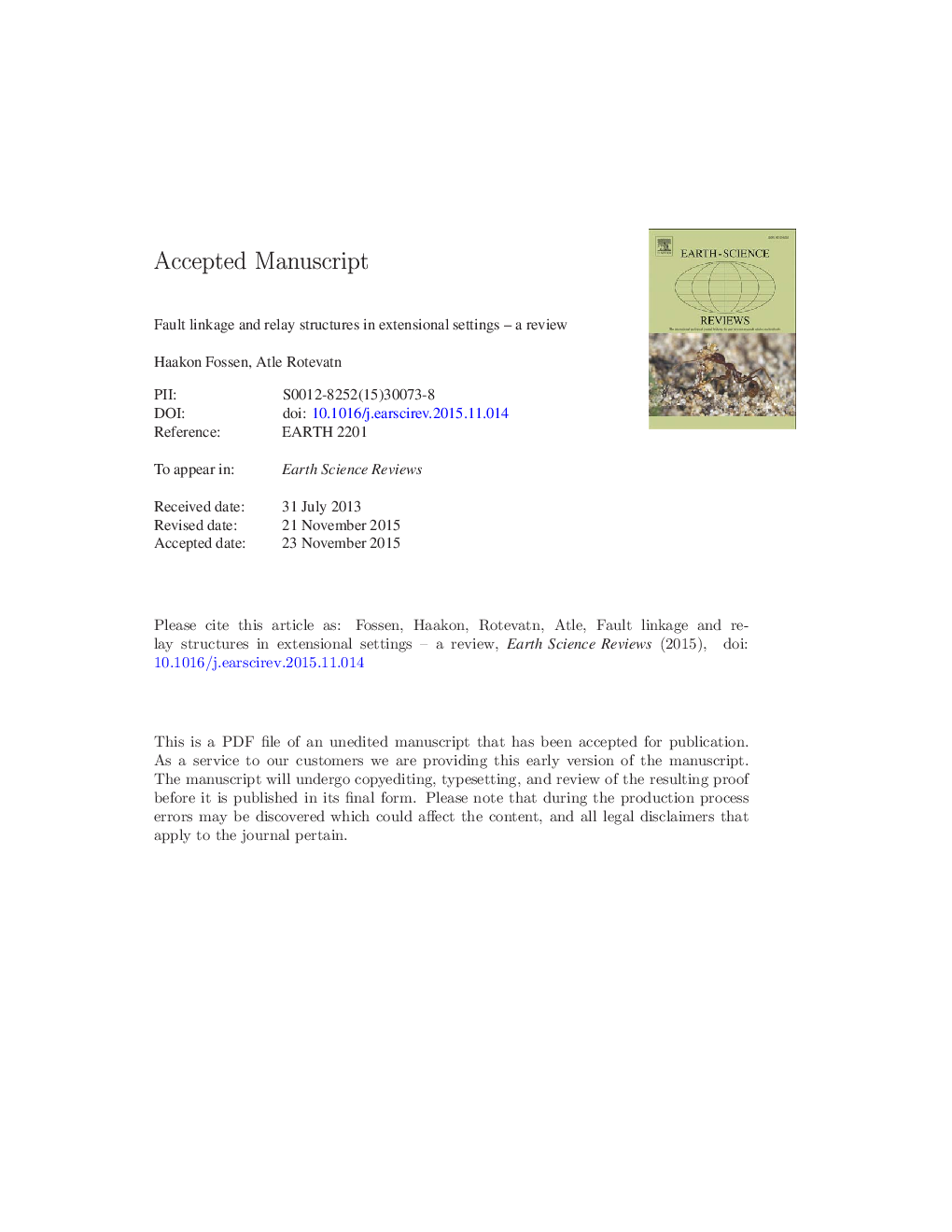| کد مقاله | کد نشریه | سال انتشار | مقاله انگلیسی | نسخه تمام متن |
|---|---|---|---|---|
| 6442972 | 1639948 | 2016 | 54 صفحه PDF | دانلود رایگان |
عنوان انگلیسی مقاله ISI
Fault linkage and relay structures in extensional settings-A review
ترجمه فارسی عنوان
پیوند خطا و ساختارهای رله در تنظیمات گسترده - بازبینی
دانلود مقاله + سفارش ترجمه
دانلود مقاله ISI انگلیسی
رایگان برای ایرانیان
کلمات کلیدی
ساختارهای رله، رله رله، رشد گسل، تعارض گسل، گام به گام
موضوعات مرتبط
مهندسی و علوم پایه
علوم زمین و سیارات
زمین شناسی
چکیده انگلیسی
Normal fault relay structures form at all scales as faults interact or step out of their own plane during growth, and their successive formation and destruction represent the most efficient way for faults to lengthen. Their progressive evolution from the moment of fault overlap to a fully breached fault involves strain accumulation in the fault overlap zone, initially through bending of layers and secondarily by the formation of fractures, deformation bands (porous sandstones) and subsidiary faults. These small-scale structures have more complex orientation patterns than the typically strike-parallel orientations seen in ordinary damage zones away from sites of fault interaction. Breaching occurs at a given level of bending (dip or curvature) and at the achievement of a critical level of fracture or deformation band density that again depends on local geometric and lithologic/mechanical conditions, but a ramp slope close to 10-15° at the onset of breaching seems to be common. Relay zones are not only lateral communication paths for fluid flow across sealing faults, but their anomalously wide and well-developed damage zones make them conduits of vertical fluid flow in petroleum, groundwater, CO2 sequestration and magma settings alike, and therefore also serve as sites of ore deposits.
ناشر
Database: Elsevier - ScienceDirect (ساینس دایرکت)
Journal: Earth-Science Reviews - Volume 154, March 2016, Pages 14-28
Journal: Earth-Science Reviews - Volume 154, March 2016, Pages 14-28
نویسندگان
Haakon Fossen, Atle Rotevatn,
